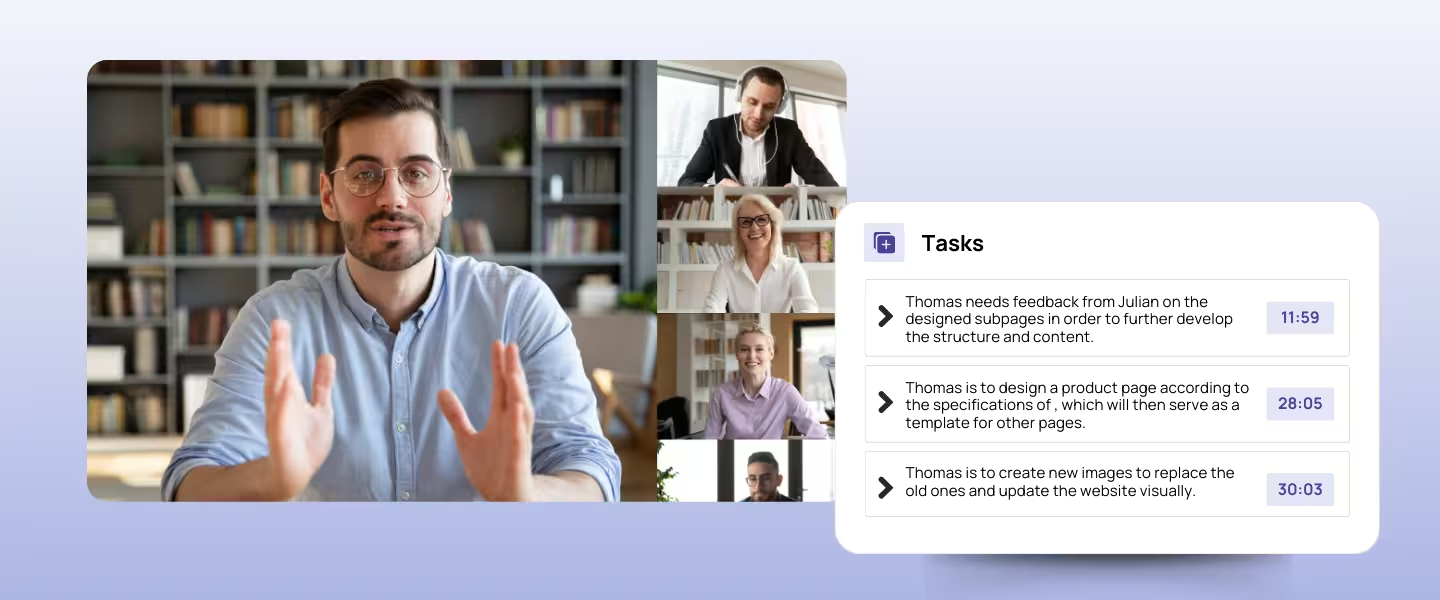Table of Contents
Objection handling in sales refers to the professional management of customer concerns and hesitations throughout the sales process. It’s the art of viewing doubts not as obstacles, but as opportunities for deeper dialogue. In a world where buyers are more informed and have countless alternatives, the quality of your objection handling often determines whether a deal is won or lost.
This skill is essential to sales success—it builds trust between seller and customer and lays the foundation for long-term business relationships. In this article, we explore proven objection-handling methods, the psychology behind them, modern technological tools, and their role in fostering customer loyalty.
You’ll learn how to not only increase your close rate through professional objection handling but also how to build lasting customer relationships that go far beyond the initial sale.
Objection Handling in Sales: Basics and Importance
Definition and Relevance
Objection handling includes all techniques and strategies that sales professionals use to respond to customer concerns—whether to clarify, address or reframe them into benefits. It’s a crucial part of the sales process, and it goes far beyond simply countering arguments.
In fact, objection handling often marks a pivotal moment in the sales conversation. It’s where potential roadblocks can turn into powerful opportunities. Rather than interpreting objections as rejection, skilled sellers recognize them as signs of interest. A customer voicing concerns is already emotionally engaged—and gives the salesperson a chance to respond directly to their true needs.
Objections aren’t obstacles—they’re tools for deeper dialogue. They offer valuable insights into the customer’s thinking, priorities, and decision-making process. Most importantly, they signal that the buyer is seriously considering the offer and simply needs further guidance.
Objectives of Objection Handling
The primary goal of objection handling is to understand the customer's concerns and address them constructively. Through active listening and empathy, salespeople can uncover the real reasons behind objections and offer tailored solutions.
Another key objective is to increase the likelihood of closing. Effective objection handling removes barriers, reinforces the value of the offer, and helps build confidence in the buying decision. It also plays a critical role in creating trust and long-term loyalty—which is essential for repeat business and referrals.
Finally, a structured objection-handling process helps avoid misunderstandings, reduce drop-offs, and enhance transparency. It improves the overall customer experience and strengthens the salesperson’s credibility and professionalism.

Proven Objection Handling Techniques in Sales
1. The Boomerang Method
The Boomerang Method is one of the most effective techniques for handling objections. It works by taking the customer's objection and turning it into a benefit. The idea is to shift the customer's perspective and show them how a perceived drawback can actually be an advantage.
A classic example:
Objection: “That’s too expensive.”
Response: “I understand it may seem costly at first glance. But that price reflects our uncompromising quality and durability. In the long run, you’ll actually save money because you won’t need frequent replacements.”
2. Asking Clarifying Questions
Follow-up questions are powerful tools for uncovering the real reasons behind objections. They help reveal specific concerns and give the salesperson valuable insights to tailor their response effectively.
Examples include:
- “What exactly concerns you about this?”
- “What past experiences are you basing this on?”
- “What would need to happen for you to feel more confident about this?”
These questions invite dialogue and show the customer that their concerns are being taken seriously.
3. Worst-Case Scenario Technique
With the Worst-Case Technique, the salesperson openly addresses the customer's biggest fear and neutralizes it with logic and transparency. This strategy builds trust by showing that the seller is prepared for every eventuality.
By presenting contingency plans or risk-mitigation measures, you reduce anxiety and reassure the customer that their worst-case scenario has been anticipated and covered.
4. Mirroring and Validation
Emotional intelligence is critical in objection handling. Mirroring and validating show empathy and make the customer feel heard and understood. This creates trust and a deeper emotional connection.
It’s not just about addressing the objection itself—but also the underlying emotions behind it. When a salesperson acknowledges both the concern and the feeling driving it, customers are more likely to stay open and engaged.
5. Storytelling to Support Your Message
Customer stories and case studies are powerful in overcoming objections. They help make abstract benefits feel real and relatable. A well-timed success story can help the customer envision a positive outcome with your solution.
Narrative-based arguments often resonate more deeply than facts alone. They trigger emotional responses and simplify complex ideas. One strong example from a satisfied customer can be more convincing than a detailed product spec sheet.
The Role of Psychology and Emotional Intelligence in Objection Handling
Understanding the Psychology Behind Objections
Objections are rarely about surface-level issues—they often reflect deeper emotions. They may indicate uncertainty, fear of making the wrong decision or a lack of trust. Understanding these psychological layers is essential for truly effective objection handling.
Common emotional drivers include:
- Fear of loss
- Concerns about status or reputation
- Past negative purchase experiences
Skilled salespeople identify and respond to these root causes, not just the symptoms.
The Power of Emotional Intelligence
Active listening and compassionate responses are the foundation of emotional intelligence in sales. They help sellers recognize the customer’s true needs and respond appropriately.
Empathy builds trust and credibility. In fact, studies show that salespeople with high emotional intelligence close up to 50% more deals, according to a 2023 Harvard Business Review report. Their ability to understand and relate to customers leads to more effective, human conversations.
Using NLP Techniques to Uncover Hidden Motives
Neuro-Linguistic Programming (NLP) offers useful tools for objection handling. In sales, NLP helps decode verbal and non-verbal cues, identify subconscious motivations and adapt communication styles accordingly.
By mirroring a client’s language and body language, and by recognizing underlying patterns, sales professionals can establish deeper rapport and guide conversations more intuitively.

Modern Approaches: Technology and Personalization in Objection Handling
CRM Systems and AI Tools
Modern CRM systems allow sales teams to systematically track and analyze recurring objections. This data collection helps identify patterns and refine sales strategies accordingly.
AI-powered tools can suggest tailored responses and persuasive talking points in real time. A practical example: digital sales enablement platforms that provide sales reps with instant, context-specific answers to common objections—right during the conversation.
Using Data to Optimize Sales Strategy
By recognizing objection patterns and analyzing trends, teams can continuously refine their approach. Data analytics reveals recurring pain points, enabling proactive solution development and more effective, customized messaging.
This insight empowers teams to adapt their techniques to meet specific market challenges, improving both the speed and relevance of their objection handling.
Recognizing Customer Types and Responding Flexibly
Tools like the DISC model help salespeople tailor their objection handling based on personality types. For example, a dominant client may respond better to bold, results-driven messaging, while a more analytical or social type may require a different tone and depth of information.
Market conditions also play a role. In highly competitive industries, objections require more flexible and solution-oriented strategies, focused on differentiation and long-term value.
Training and Continuous Development
Regular training and role-playing exercises are essential. They keep skills sharp and allow sales teams to learn and refine new techniques in a risk-free environment.
Equally important are soft skills, such as emotional intelligence and communication ability. Today’s most effective training programs use digital learning platforms and simulations to create realistic practice scenarios.
Objection Handling as a Key to Long-Term Customer Loyalty
Using Objections to Build Trust and Long-Term Relationships
Professional objection handling is about taking customer concerns seriously—which builds trust and credibility. When done well, it prevents misunderstandings and lays the foundation for a long-lasting business relationship.
Customers who feel heard and respected are far more likely to remain loyal—especially in an era of increasing competition and declining brand loyalty.
Impact on Repeat Business and Referrals
Satisfied customers often become powerful advocates. They don’t just recommend your product—they recommend you and your company as a trusted partner.
A 2023 Gallup study found that customers who experience competent objection handling show 40% higher loyalty and are twice as likely to make referrals.
Practical Tips for Sales Professionals
- Practice active listening and offer personalized solutions.
- Train empathetic and adaptive responses as a natural part of your sales process.
- Treat objection handling as a long-term investment in the customer relationship, not just a tactic to close a deal.
This mindset leads to more authentic conversations and stronger business outcomes—helping you win not only the sale but the customer’s trust and loyalty over time.

Summary & Outlook
Objection handling in sales is a multifaceted process—one that goes far beyond basic selling techniques. It blends strategic thinking, psychological insight and empathetic communication into a powerful tool for long-term sales success.
Combining proven methods like the Boomerang Technique, emotional intelligence and modern technological support brings clear advantages—for both the salesperson and the customer. Emotionally intelligent, well-trained professionals not only achieve higher close rates but also foster deeper, more lasting customer relationships.
Modern tools such as CRM systems and AI support have transformed how sales teams handle objections. They make it easier to understand customer needs, tailor responses and increase efficiency across the entire sales process.
Ongoing training and the ability to adapt to different customer types are key to long-term success. In today’s fast-changing business environment, the ability to handle objections professionally is more than a skill—it’s a competitive edge.
The Future of Objection Handling
The future lies in the smart fusion of human empathy and technological support. Salespeople who can master this balance will not only excel today but thrive in the digital sales landscape of tomorrow.
A Note on Sally: Smart Support for Sales Teams
Sally empowers sales teams by automatically capturing meeting notes and conversation insights—making it easier to document objections and streamline follow-up actions. With seamless CRM and project management integration, Sally ensures that valuable insights from client conversations are captured, analyzed, and transformed into actionable improvements—enhancing the entire sales workflow.

Try meeting transcription now!
Experience how effortless meeting notes can be – try Sally free for 4 weeks.
Test NowOr: Arrange a Demo Appointment




